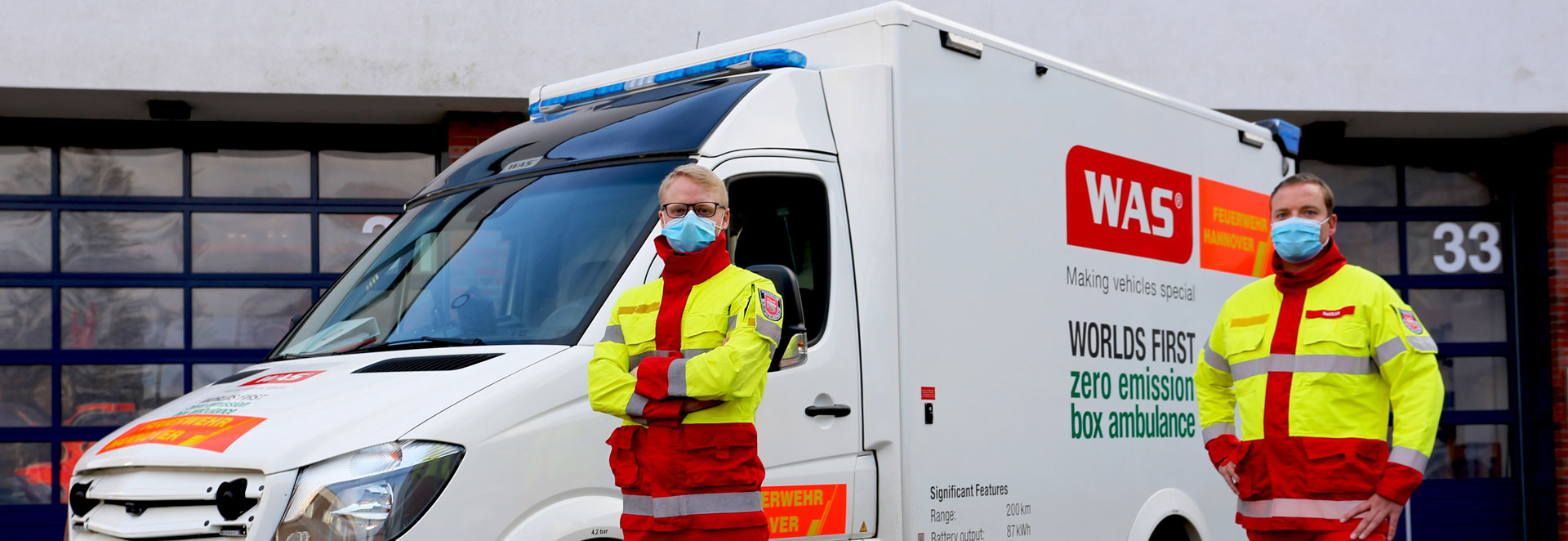We sent a prototype of the e-ambulance on a practical tour through Germany and Europe. The e-ambulance with its box body structure was tested in real-life conditions by rescue organisations and emergency services in various cities. Feedback from emergency service managers clearly shows that it is primarily these five reasons that make it worthwhile to increased use of WAS E-Ambulances in cities.
1. Climate protection
Climate protection is gathering pace: more and more cities in Germany and Europe are implementing specific measures to achieve their climate goals. There are no justifiable reasons to exclude the ambulance service from this. Reducing particulate matter and exhaust gases generated by diesel-powered vehicles is also often very high on the political agenda. In this respect, expanding e-mobility in urban areas achieves measurable eco targets and that goes far beyond just paying lip service. The fact that there aren't any exhaust emissions in vehicle stations is also a welcome bonus.
2. Driving characteristics
If e-ambulance users were initially somewhat skeptical about the technology, this quickly gave way to palpable enthusiasm – the quiet and dynamic driving experience
and powerful acceleration quickly made a huge impression! The advantages of the e-ambulance over vehicles with combustion engines are particularly evident on urgent journeys with special requirements and rights of way in inner-city traffic. The solid road holding didn't go unnoticed either. This is due to the low centre of gravity, which we achieve by installing the batteries at the height of the chassis.
3. Modern battery technology
In urban areas in particular, where short driving distances are the norm, its range of 200 kilometres is perfectly sufficient. Even when the e-ambulance was used on 12-hour shift
The battery was still half charged at the end of the shift, even when it could only be charged at the station. This quickly provides the all-important confidence in the technology that emergency service personnel need to be able to rely on. In addition, the WAS E-Ambulance uses non-combustible battery technology that does not use environmentally harmful, extracted rare metals such as nickel and cobalt.
4. 5.5 t permissible total weight
The WAS E-Ambulance is of particular interest to emergency services in urban areas because it is feasible to achieve an economical ratio between the weight of the drive, including the battery, and the payload. With a permissible total weight of 5.5 t, everything important is on board – and not at the expense of the driving dynamics due to the powerful battery.
5. Lightweight box body
The WAS lightweight box body has proved useful for many emergency services. More room to move around in the treatment area, a more comfortable experience for patients and enough storage space for the equipment that teams need: this has become the gold standard for many emergency services. On top of that, the box is also well suited to efficient e-mobility due to its low weight.










No Comments